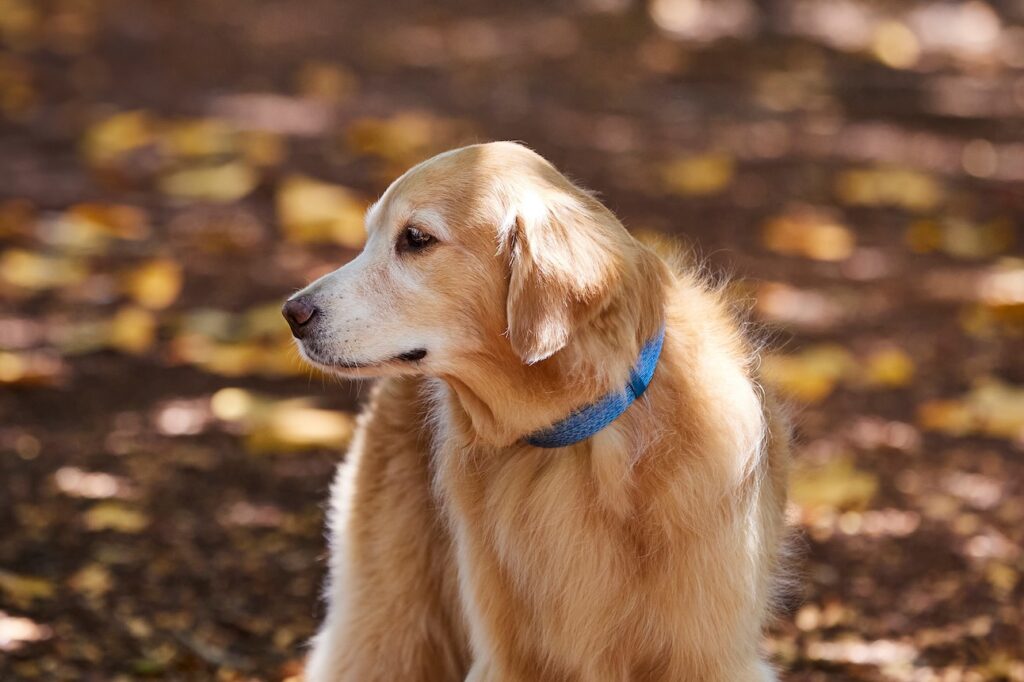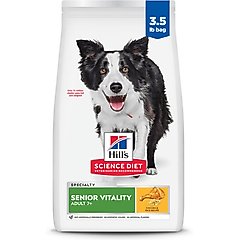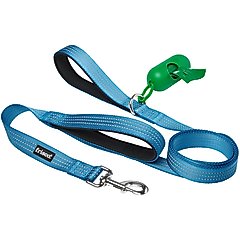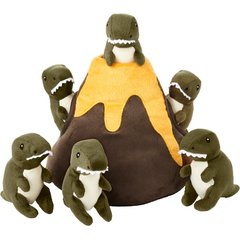When Is a Dog Considered a Senior? What To Know About Senior Dog Age

Photo by Chewy
Knowing when a dog is considered a senior is an important part of pet parenthood. It can help you maintain their health and well-being as they get older, but the calculation might be more nuanced than you’d expect.
Many pet parents assume all dogs follow the same aging timeline, but this isn’t the case. Pinpointing senior status depends on a dog’s size, breed, and individual health factors. So when is a dog considered a senior?
Key Takeaways
- A dog is considered a senior during the last 25% of their expected lifespan.
- When senior dog age begins depends on your dog’s breed, size, and overall health.
- Toy breeds are often considered seniors at around 11–12 years old, while giant breeds reach their golden years at 6–7 years old.
- Visible signs of dogs aging include graying hair, decreased mobility, and dental issues.
Senior Dog Age
Veterinarians often define the senior dog age range to be the last 25% of a dog’s expected lifespan. In other words, if a dog is expected to live to be around 12 years old, they become a senior when they are around 9 years old. These numbers are primarily based on the dog’s size.
Studies consistently show that smaller dogs live significantly longer than bigger dogs. Why this happens isn’t fully understood, but the pattern is well-established.
This table outlines when dogs of different sizes are typically classified as seniors.
How Old Is a Senior Dog?
| Breed Size | Weight Range | Senior Dog Age |
|---|---|---|
| Toy breeds | Under 10 pounds | 11–12 years |
| Small breeds | 10–20 pounds | 9–11 years |
| Medium breeds | 21–50 pounds | 8–10 years |
| Large breeds | 51–90 pounds | 7–9 years |
| Giant breeds | Over 90 pounds | 6–7 years |
Your veterinarian can fine–tune these numbers based on your dog’s breed (some breeds are known to have shorter or longer life expectancies than dogs of similar sizes) and their overall health.
How Do I Know if My Dog Is a Senior?
Certain physical and behavioral changes can show where a dog stands in their aging process, as each pup ages at a different rate and in unique ways. Here are some signs that your dog is approaching their senior years.
Gray Hair
One of the most obvious signs to look for is graying fur. This typically starts around the muzzle before spreading to other parts of the body.
While some dogs start going gray when they are relatively young, most develop more widespread gray hair during their senior years. This change is completely normal and purely cosmetic.
Vision and Hearing Changes
Older dogs frequently develop lenticular sclerosis, a normal age-related change that creates a bluish, transparent haze to the lenses of their eyes. But this condition, unlike cataracts, doesn’t significantly impact vision.
Age-related hearing loss is another common finding in senior dogs. You may notice that your dog seems harder to wake from sleep or appears startled when approached from behind.
Talk to your veterinarian if you notice changes to your dog’s ability to see or hear.
Reduced Activity and Mobility Issues
Subtle mobility changes are often the first sign you’ll notice as your dog gets older. Pay close attention to how your dog rises from lying positions, navigates stairs, and exercises.
Arthritis is one of the most common conditions affecting senior dogs, especially large breeds. The good news is many treatment options are available, from anti-inflammatory medications to joint supplements to physical therapy, so schedule a checkup with your veterinarian if your dog appears to be slowing down.
Weight and Muscle Mass Changes
It’s normal for a dog’s physique to go through changes as they get older. For example, they may experience mild muscle loss if they’re not very active.
That said, large or abrupt changes should always be evaluated by a veterinarian, as they can be associated with disease.
Dental Disease
Dental wear, tooth loss, and periodontal disease are very common in senior dogs. Regular cleanings and at-home dental care, like brushing your dog’s teeth, become increasingly important as dogs age.
Schedule an appointment with your veterinarian if your dog has bad breath, red or bleeding gums, loose or missing teeth, or appears to be in pain while eating or being touched around the mouth.
Memory Problems
As senior dogs age, they’re at risk for canine cognitive dysfunction, a condition that is very similar to Alzheimer’s disease in people. Symptoms can include:
- Wandering aimlessly, especially at night
- Getting stuck in corners or lost in the house
- Barking or howling, seemingly at nothing
- Increased anxiety and panting
- Forgetting where food and water bowls are
- Pooping or peeing inside the house
- Forgetting tricks or training
How To Care for a Senior Dog
As senior dogs age, their needs change. Aging brings metabolic changes and an increased risk for serious diseases. Here’s how to stay on top of your dog’s care.
Enhance Their Veterinary Care
Senior dogs need to be seen by a veterinarian at least twice a year—a change from their previous annual visits. More frequent checkups make early detection and treatment of age-related conditions more likely.
During these visits, your veterinarian will perform a comprehensive physical examination, talk to you about any changes you’re noticing at home, and recommend additional diagnostic tests like blood work or X-rays, if needed.
Manage Their Nutrition
While the Association of American Feed Control Officials (AAFCO) hasn’t established specific senior dog nutritional standards, AAFCO adult-compliant senior dog foods that are enriched with antioxidants, omega-3 fatty acids, fiber, and joint protectants are often a good choice.
Recommended Products
Dietary needs can vary significantly from dog to dog, so always talk to your veterinarian about what food is right for your senior pup.
Adjust Their Exercise
Senior dogs still need to exercise, but you will probably need to make adjustments to your workout plan as your dog gets older.
At some point, going for a run or roughhousing at the dog park will stop being fun for most dogs, but an unhurried walk through the neighborhood still provides many of the same benefits.
Recommended Product
Meet Their Mental and Social Needs
Even if your senior dog can no longer join you on all your adventures, it’s still important to include them in as much daily life as possible.
Older dogs need mental stimulation and social interactions just like younger dogs. Enrichment toys, meetups with other older dogs, and simply spending time together are great ways to keep your dog engaged.
Recommended Products
Recognizing how dogs age and when a dog is considered a senior allows for proactive care that helps keep them healthy and happy through their golden years.










